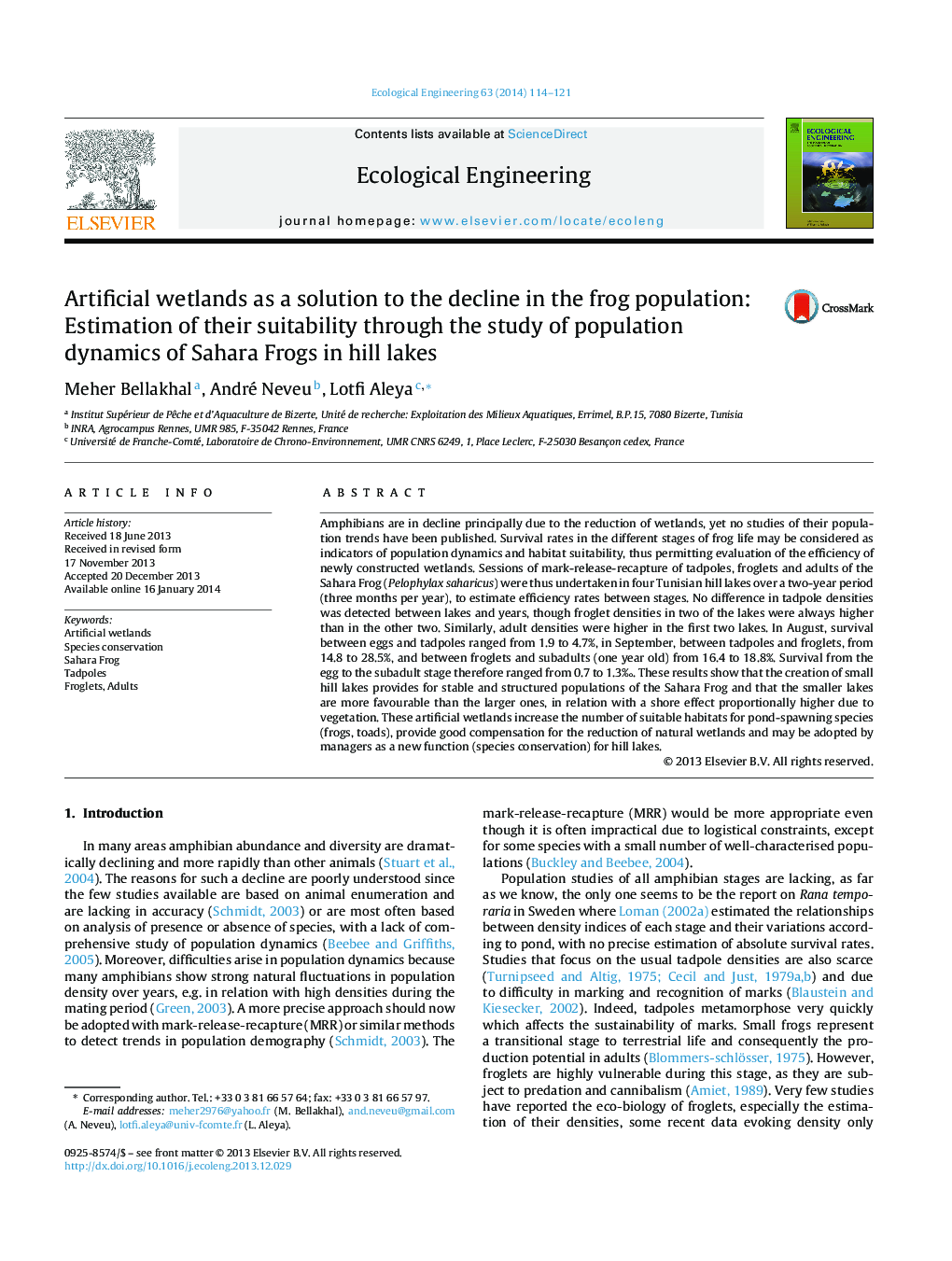| Article ID | Journal | Published Year | Pages | File Type |
|---|---|---|---|---|
| 4389623 | Ecological Engineering | 2014 | 8 Pages |
•Dynamics of the Sahara Frog (Pelophylax saharicus) in four Tunisian hill lakes.•Mark-release-recapture of tadpoles, froglets and adults over two years.•Small lakes provide for stable populations with conservation of pond-spawning species.•Artificial wetlands may offset the loss of natural habitats playing a role in amphibian conservation.
Amphibians are in decline principally due to the reduction of wetlands, yet no studies of their population trends have been published. Survival rates in the different stages of frog life may be considered as indicators of population dynamics and habitat suitability, thus permitting evaluation of the efficiency of newly constructed wetlands. Sessions of mark-release-recapture of tadpoles, froglets and adults of the Sahara Frog (Pelophylax saharicus) were thus undertaken in four Tunisian hill lakes over a two-year period (three months per year), to estimate efficiency rates between stages. No difference in tadpole densities was detected between lakes and years, though froglet densities in two of the lakes were always higher than in the other two. Similarly, adult densities were higher in the first two lakes. In August, survival between eggs and tadpoles ranged from 1.9 to 4.7%, in September, between tadpoles and froglets, from 14.8 to 28.5%, and between froglets and subadults (one year old) from 16.4 to 18.8%. Survival from the egg to the subadult stage therefore ranged from 0.7 to 1.3‰. These results show that the creation of small hill lakes provides for stable and structured populations of the Sahara Frog and that the smaller lakes are more favourable than the larger ones, in relation with a shore effect proportionally higher due to vegetation. These artificial wetlands increase the number of suitable habitats for pond-spawning species (frogs, toads), provide good compensation for the reduction of natural wetlands and may be adopted by managers as a new function (species conservation) for hill lakes.
